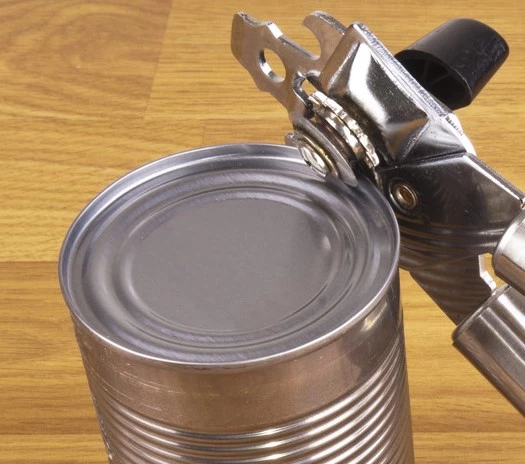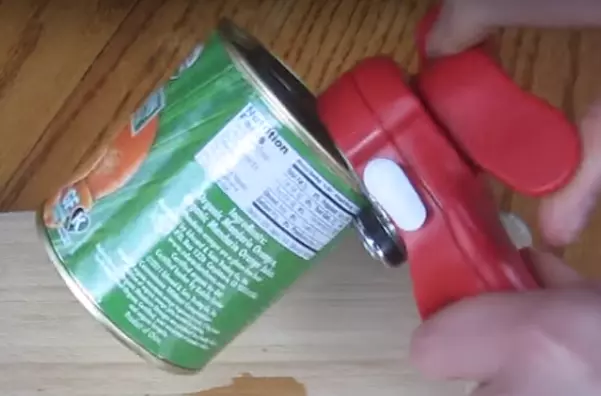
Can openers do not vary much when it comes to doing the actual task. Whether it be a side cut or top cut can opener, both get the job done. However, a few things can cause a cook to be more inclined toward one kind of opener than the other.
Positioning, type of cut, preservation of the can after opening, and swiftness of the cut are just a few of the factors that differ in the side cut vs. top cut can opener discourse. To get a thorough idea of both of these openers, we’ve gathered the following info.
So, if you’re having a hard time deciding on the right kind of can opener to settle on, here is some stuff that you should know.
Key Differences
Just like we’ve already glossed over, side cut and top cut can openers both differ in a few ways. Here are the most noticeable differences about the two types of openers:
Positioning
As its name already suggests, the side cut can opener makes a horizontal incision along the side of the can. The cutter is placed and adjusted at the outer lip of the can just so that the blade touches below the plane of the can’s top.
The handle of the side cut can opener is faced sideways. This way, the user is easily able to hold onto the handle and turn the notch.
With the top cut can opener, it’s slightly different. The cutter is also adjusted at the lip of the can, but its blade sits between the crook of the outer lip and the low surface of the can’s top. Because of this positioning of the cutter, the blade is able to cut along the crevice of the can.
As for the handle, it’s turned upright so the user has to hold it vertically whilst making the cut.
Type of Cut
For years, the traditional vertically positioned top cut can opener has made more rough cuts than the side cut can opener. This is because the positioning of the top cut opener requires the user to push down for balance, making uneven edges on the can.
This is different with side cut openers, as they usually make slightly smoother cuts and are easier to control. Plus, the side cut opener removes the flat can top along with the outer lip, whereas the top cut opener only cuts a circle off the top.
Speed
Top cut openers are the traditional can openers, which is a reason why they’re a bit slower to work with than side cut openers. Since top cut openers require the additional effort of holding the handle upright during cutting, it puts strain on the user to keep balance. This eventually slows down the swiftness of the cut.
With side cut openers, you don’t have to push down for balance so the blade cuts through the can quicker.
Advantages
Despite their differences, both the top cut opener and the side cut opener have their benefits. To name a few, here are some examples of their advantages:
Top Cut Can Opener

- Traditional build, foolproof design for easy cutting
- Cuts a circle off the top and leaves the top lip with no sharp edges
- Comfortable handle and notch system for mistake-free cutting
- Less chance of spills and splashes, food does not overflow from can opening
- Adjusts simply between the crook of the top and outer lip of can
Side Cut Can Opener

- Cuts along the side of the can, does not require added balance
- Takes off top and outer lip in one go, leaves no excess
- Notch and easy to grip handle for precise cutting
- Quick and smooth cuts due to the horizontally positioned blade
- Does not put strain on the user’s hand
Disadvantages
There are only a few downsides to each of these cutters. Although there aren’t many, here are some that may come to mind:
Top Cut Can Openers
- Rough Cuts
Since it requires a little more effort to push down the opener in order to keep the tool upright, it can cause downturned and uneven edges at the rim of the can that may cause accidental cuts.
- Less Hand Control
With a top cut can opener, you have to focus on steadiness, force, and precision all at once. This can put off your hand control, causing slower and more uneven cuts.
Side Cut Can Opener
- Overflow of Food
Since the cut is made below the top of the can, this may cause the food to overflow and spill.
- Sharp Edge
With the outer lip cut away along with the can top, it leaves a sharp edge that may cause cuts.
Frequently Asked Questions
1. How do safe cut can opener work?
Adjust and place the cutter at the edge of the can and turn the notch at an anticlockwise motion. When you’ve come around the can, turn the notch backward once to lift the top off.
2. Which is long lasting can opener side cut or top cut?
Both have great long term performance, it depends on which one is easier for you to use. Take a look at our advantages and disadvantages for both to decide.
Conclusion
So, which one is better in the side cut vs. top cut can opener debate? Long answer short, it all comes down to your preference as a cook. Both have their ups and downs, but as long as they’re easy to work with for you, they’re good enough.
